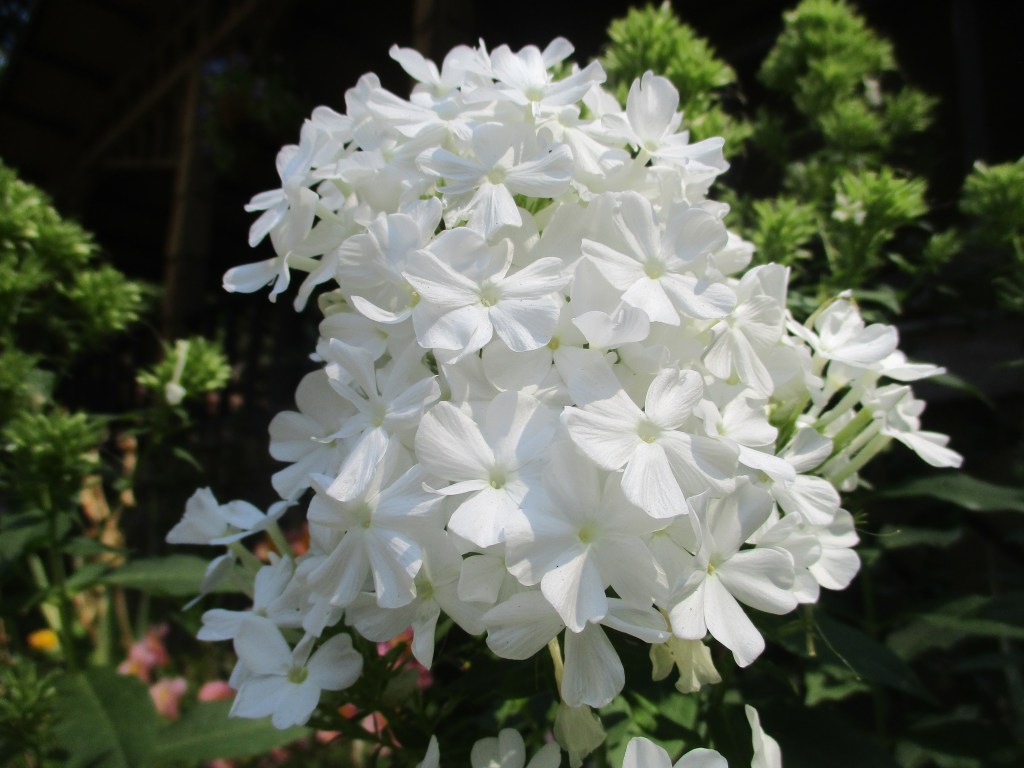Since the Fire, my Six on Saturday posts have been rather gloomy. Titles such as ‘Pompeii‘, ‘Revelation‘ and ‘Revelation II‘ are appropriately descriptive. More color is in order.
1. Silvery bark of a silver maple is sort of colorful. Hey, the next five really are more colorful. I planted this tree as a young twigling in the Santa Clara Valley when I was in high school. It had a second trunk, which I layered as another tree for the front garden. This tree is in back. I would like to get a copy for my own garden. This is now an old picture that I got during evacuation.

2. Orangish red bloom is that of ‘Pollack’ zonal geranium, which is grown more for its very variegated foliage. However, this bonus bloom is on a specimen that reverted to be less variegated.

3. Peachy Peruvian lily looks pink to me, but is not quite as pink as the pink sort. There is a yellow sort here too. They certainly are prolific. In 1986, I worked with these as a cut flower crop.

4. White phlox self sowed here last year or earlier, and have performed splendidly. There are more this year than there were last year. It would be excellent to get a few more for next year.

5. Blue annual morning glory grew up with my tomatoes. Oddly, they did not do so well where their seed were actually sown intentionally, in pots on the deck up above the vegetable garden.

6. This is my favorite picture this week. I can not read what, if anything, is written in paint on this rock. It looks like someone enjoyed painting it, and placing it to be found out in the garden.

This is the link for Six on Saturday, for anyone else who would like to participate:
https://thepropagatorblog.wordpress.com/2017/09/18/six-on-saturday-a-participant-guide/
Good to see you with some good things doing well in the garden!
LikeLiked by 1 person
Although my vegetable garden got dry, the prettier flowery gardens at work are still doing well. I do not get enough pictures of them because I do not find them to be as interesting.
LikeLiked by 1 person
I like the rock! Rock on, Tony. You like Silver Maples??
LikeLiked by 1 person
The rocks are pretty sweet. There are a few of them around. They are obviously painted by different people.
Silver maple is one of my two favorite maples, along with the native bigleaf maple. It happens to be remarkably happy here, and even farther south in desert climates. If it gets irrigated, it does not mind the lack of humidity or mild winters. It is a big tree that grows fast, but is innately structurally deficient, and may not last long. They are quite old after only half a century or so. They provide nice shade in summer that is not too dark for lawns to survive in, and then defoliate cleanly for winter. In California, no one notices that they lack color in autumn.
LikeLike